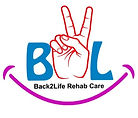Psychological Approaches for Insomenia
- b2lcare

- Sep 4, 2020
- 3 min read

Psychological techniques that can help with sleep problems include cognitive behavioral therapy, relaxation training, meditation, and hypnosis. These techniques rely on a common set of skills:
Deep muscle relaxation
Focus elsewhere rather than on the pain
Visual, sound, or other relaxing sensory imagery
Distancing oneself from the chronic pain.
Two additional sleep aids include utilizing psychological approaches to reduce pain and fall asleep and setting up a sleep-conducive environment.
Using Psychological Approaches to Minimize Pain at Bedtime
"Mind over matter” can help patients override or re-balance pain signals with more pleasant, sleep-inducing thoughts. A few techniques that have proven successful are:
Hypnosis, which can help a patient associate certain actions with sleep (such as turning off lights or closing doors and drapes)
Visualization of something peaceful or relaxing, like clouds in a night sky, can be a good transition from the work day to more restful nighttime
Meditation or other relaxation practices that incorporate deep breathing and aim to free or compartmentalize feelings of stress and in the body
If worrying is a major deterrent to sleep, try “forced worrying”. Several hours before bedtime create a brief period of time (15 minutes or so) to write down worries. Then leave the room where you wrote down the worries, and if worrying recurs, remind yourself that you will have time to think about these worries tomorrow.
Creating an Environment Conducive to Sleep
A comfortable bed and inviting bedroom can also be effective sleep aids, and can make a difference in the quality of sleep experienced. The following can make for a restful environment:
Pillows for Neck Pain Video
Body or neck pillows to provide support; pillows under the knee, or between the knees if a patient sleeps on his side, can relieve stress on painful areas
A high quality mattress that is both comfortable and provides adequate support
Appropriate levels of light and sound. Light can be minimized using black-out curtains, and noise diminished by a solid wood door between rooms. Alternatively, gentle music can provide a soothing background to drift off.
Deep Breathing Exercises Make Sleep Easier
Most psychological techniques begin with controlled deep breathing. Although there are many relaxation exercises, the following is a simple example of a deep breathing technique that can help people fall asleep:
Lie down in a comfortable position on the back with legs straight and slightly apart. Allow the toes to point comfortably outward and let the arms rest at the sides without touching the body. Place the palms up and close the eyes.
Focus on breathing. The hand can be placed on the spot that seems to rise and fall the most as one inhales and exhales. Notice the position of the hand. Is it on the chest, abdomen or somewhere in-between?
Now, gently place both hands on the abdomen and again focus on breathing. Pay attention to how the abdomen rises during inhalation and falls during exhalation. Try to make the hands rise and fall.
Breathe through the nose during this exercise. If needed, one may clear the nasal passages prior to doing breathing exercises.
If breathing into the abdomen is difficult, press the hand down on the abdomen during exhalation and allow the abdomen to push the hand back up during deep inhalation. The hand pressure will help create awareness of the action of the abdomen during breathing.
Notice if the chest is moving in harmony with the abdomen, or if it appears rigid. Take a few minutes and let the chest follow the movement of the abdomen. This is done by continuing to focus on the abdomen moving up and down as one breathes and simply allowing the chest to follow its motion naturally.
















Comments